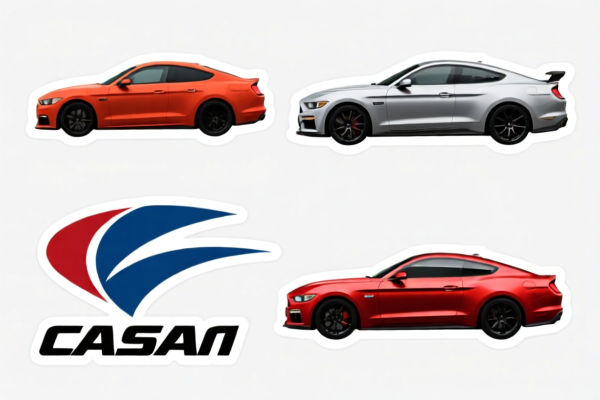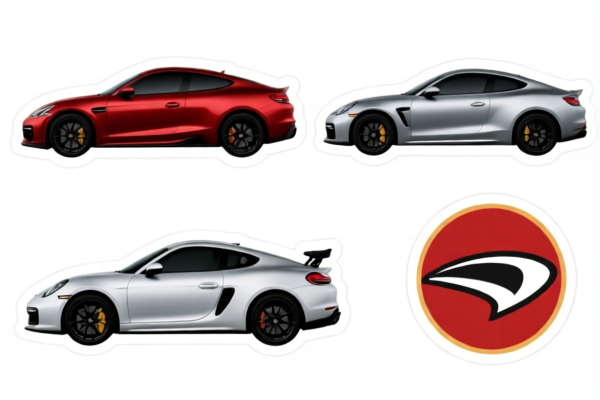| HS Code | Official Doc | Tariff Rate | Origin | Destination | Effective Date |
|---|---|---|---|---|---|
| 4821102000 | Doc | 55.0% | CN | US | 2025-05-12 |
| 4821104000 | Doc | 55.0% | CN | US | 2025-05-12 |
| 4823901000 | Doc | 55.0% | CN | US | 2025-05-12 |
| 4823906000 | Doc | 55.0% | CN | US | 2025-05-12 |
| 3919102055 | Doc | 60.8% | CN | US | 2025-05-12 |
| 3919905060 | Doc | 60.8% | CN | US | 2025-05-12 |
| 3921904010 | Doc | 34.2% | CN | US | 2025-05-12 |
| 3921905010 | Doc | 34.8% | CN | US | 2025-05-12 |




Material Stickers
Material stickers are adhesive labels constructed from a specialized synthetic material known as polypropylene film, typically biaxially oriented (BOPP). They are distinguished by their durability, versatility, and resistance to various environmental factors.
Material Composition
The core component is BOPP film, chosen for its strength, clarity, and printability. A pressure-sensitive adhesive (PSA) layer is applied to one side, enabling the sticker to adhere to surfaces with applied pressure. A release liner, often coated with silicone, protects the adhesive until application. Additional coatings may be applied for enhanced properties like UV protection or specific finishes.
Purpose
Material stickers serve a broad range of labeling and decorative purposes, including:
- Product Labeling: Identifying products in various industries (food, beverages, cosmetics, industrial goods).
- Branding: Displaying logos, brand messaging, and product information.
- Packaging: Sealing packages, providing tamper-evidence, and enhancing visual appeal.
- Promotional Use: Marketing campaigns, event signage, and decorative applications.
- Asset Tracking: Inventory management and identification of equipment.
Function
The primary function is to provide a secure and lasting bond to a variety of surfaces while maintaining print quality and visual integrity. Key functional attributes include:
- Adhesion: Ability to adhere firmly to diverse materials (plastic, glass, metal, paper). Adhesive strength varies based on formulation.
- Durability: Resistance to tearing, abrasion, and fading.
- Water Resistance: Protection against moisture and liquids.
- Chemical Resistance: Tolerance to certain chemicals and solvents (level varies by adhesive type).
- Printability: Acceptance of various printing methods (flexography, digital printing, offset printing).
Usage Scenarios
- Food and Beverage: Labels for bottles, jars, cans, and packaging, requiring water resistance and potentially low-temperature performance.
- Cosmetics and Personal Care: Labels for containers, tubes, and boxes, often demanding high print quality and resistance to oils and lotions.
- Industrial Applications: Labels for equipment, parts, and containers, requiring durability and chemical resistance.
- Automotive: Labels for components, parts identification, and warning labels.
- Retail: Price tags, promotional stickers, and product information labels.
Common Types
- White Opaque Material Stickers: The most common type, offering excellent printability and opacity.
- Clear Material Stickers: Provide a "no-label" look, allowing the product to be visible.
- Metallic Material Stickers: Available in silver, gold, and other finishes for a premium appearance.
- Transparent Material Stickers: Similar to clear, but with slightly different adhesive properties.
- Writable Material Stickers: Designed to allow handwriting with pens or markers.
- Removable Material Stickers: Formulated with adhesives that allow for clean removal without leaving residue.
- Permanent Material Stickers: Utilize strong adhesives for a lasting bond.
- Specialty Material Stickers: Include textured finishes, holographic effects, or unique adhesive properties for specific applications.
Material stickers can fall under several classifications depending on their composition and application. Here's a breakdown of potential HS codes based on the provided information:
- 4821.10.20.00: This code covers paper and paperboard labels of all kinds, whether or not printed, specifically those printed in whole or in part by a lithographic process. The total tax rate is 55.0%, comprised of a 0.0% base tariff and a 25.0% additional tariff, increasing to 30% after April 2, 2025.
- 4821.10.40.00: This code also covers paper and paperboard labels of all kinds, whether or not printed, but for those printed using methods other than lithography. The total tax rate is also 55.0%, with the same tariff structure as above (0.0% base, 25.0% additional, increasing to 30% after April 2, 2025).
- 3919.10.20.55: This code covers self-adhesive plates, sheets, film, foil, tape, strip and other flat shapes, of plastics, whether or not in rolls, specifically those in rolls of a width not exceeding 20 cm, and other types. The total tax rate is 60.8%, consisting of a 5.8% base tariff and a 25.0% additional tariff, increasing to 30% after April 2, 2025.
- 3919.90.50.60: This code covers self-adhesive plates, sheets, film, foil, tape, strip and other flat shapes, of plastics, whether or not in rolls, but for other types. The total tax rate is 60.8%, with the same tariff structure as above (5.8% base, 25.0% additional, increasing to 30% after April 2, 2025).
It's important to note that the specific HS code will depend on whether the stickers are made of paper/paperboard or plastic, whether they are self-adhesive, and the printing method used.
Regarding HS code 3919.10.20.55 and 3919.90.50.60, please note that the stickers are made of plastic.
Customer Reviews
No reviews yet.